Carpets and Textiles at Christie’s, London, 26 April 2018

Lot 259, ‘Lotto’ rug, probably Ushak, West Anatolia, first half 17th century. Estimate: £30,000-£40,000
The Arts of the Islamic and Indian Worlds sale at Christie’s in London on Thursday 26 April 2018, in which the final 70 lots (241–310) are devoted to a diverse selection of rugs from most parts of the carpet-weaving world, include some items fresh to the market as well as a few old friends.
The most interesting of the new-to-the-market rugs are a trio of classical Ushak ‘Lottos’ (lots 258-260), comprising two late 16th-century small carpets and one 17th-century early ‘Transylvanian’-period rug showing a ‘detail’ of the arabesque field. All three are consigned by an Italian noble family whose ancestors include a number of cardinals and Pope Alexander VII (d.1667), from whom it is said the family inherited the rugs. The two Lotto carpets are both estimated at £40,000-60,000, while the rug, of unusually square format, is expected to fetch £30,000-40,000.
Other interesting Turkish rugs in the sale include a very colourful early-19th-century Dazkırı from southwest Anatolia (lot 261), estimated at £8,000-12,000, and a quite unusual late 18th-century Ladik prayer rug from central Anatolia, with floating columns and a sparsely rendered yellow-ground lobed-rosette and flowering-stem border (lot 263, estimate £15,000-25,000). Of more recent vintage is lot 269, a circa 1910 Kum Kapı silk-and-metal-thread rug with an all-over classical ‘Shah Abbas’ design on a golden yellow ground, and an as yet unidentified Armenian master-weaver’s cipher. Sold by Sotheby’s in Los Angeles in June 1977, and now consigned by a New York collector, it is estimated at £50,000-80,000.
A small group of second-half 19th-century Caucasian rugs includes a pinwheel Kazak, purchased from Adil Besim in Vienna in the late 1990s (lot 246, estimate £15,000-20,000). Another Kazak (lot 242, estimate £10,000-15,000) and a Lori Pambak (lot 243, estimate £5,000-7,000) were both previously sold at Christie’s in London in October 2014. Of some interest is lot 251, a pristine and precisely-drawn Marasali Shirvan prayer rug, dated 1268 (1851 CE), estimated at £20,000-25,000, and also lot 245, a rather rare Daghestan runner dated 1272 (1856 CE) at £7,000-10,000. An embroidered Azeri ‘shadda’ flatweave with a complex geometric design, lot 248, is in at £5,000-7,000.
The majority of the carpets in the sale are of Persian origin—a variable mix of 17th-century classical carpets with high-quality antique decoratives, 19th- and 20th-century town and pictorial rugs, and a sprinkling of tribal weavings. Leading the pack is a very old friend, lot 288, the 17th-century Barbieri Khorasan tree carpet. Formerly in the late Heinrich Kirchheim’s ‘Orient Stars’ Collection and last sold at Christie’s, London in April 1996 for £102,000/$178,060 (see HALI 146, p.125), it will be a real bargain if it sells within its £60,000-80,000 estimate range. Expectations are slightly higher at £80,000-120,000 for lot 295, a massive red-ground Esfahan gallery carpet from an American private collection, traceable to the Villa delle Rose in Florence in the 1960s.
Continuing the Persian consignment, both lot 257, a handsome northwest Persian Harshang design kelleh, dated 1239 (1824 CE), and lot 289, a three-medallion Qashqa’i kelleh, dated 1315 (1897 CE), are estimated at £18-25,000. A high-quality Kerman gallery carpet from Greenwood Gardens Historic House in New Jersey (lot 272), with a dense all-over pastel field of shrubs and cypresses and an inscription saying that it was made in 1286 (1869 CE) by Master Mir Ali Kermani for His Excellency Vakil al-Mulk, is estimated at £30,000-40,000. There are also good Garrus Bijar, Heriz, Bakhshaish and Mohtashem Kashan carpets in the sale.
The sale also features a small group of Chinese and East Turkestan rugs. In addition to two late Qing-dynasty (ca. 1900) silk-and-metal-thread so-called ‘palace’ rugs with inscriptions in Chinese characters (lots 280 and 281, estimated at £12,000-16,000 and £7,000-10,000 respectively), there is another very old friend, an early 19th-century Ningxia ‘RKO’ rug (lot 276). It is no stranger to the auction rooms, having first been sold for a very respectable $27,110 at Rippon Boswell in May 2005 (HALI 143, p.133), and then ‘stolen’ for a pittance ($2,500) buried in an Americana auction at Sotheby’s, New York in January 2017 (HALI 191, p.123). It is no surprise that it has come around again.
Finally, in the rest of the sale there is a small handful of textiles, among them a late 16th-century Safavid figural silk-and-metal-thread lampas panel (lot 62), expected to sell for £20,000-30,000, a two-loom width 17th-century Ottoman silk-and-metal-thread çatma panel (lot 162), and a first half 19th-century Shahrisyabz suzani embroidery from Uzbekistan (lot 208), both estimated at £10,000-15,000.
D.S.

Carpets and Textile Highlights from Arts of the Islamic and Indian Worlds at Christie's, London
15 images
- Lot 257, Northwest Persian kelleh, dated AH 1239/1824 AD. Estimate: £18,000-£25,000
- Lot 258, ‘Lotto’ rug, probably Ushak, West Anatolia, late 16th century. Estimate: £40,000-£60,000
- Lot 260, ‘ Lotto’ rug, probably Ushak, West Anatolia, late 16th century. Estimate: £40,000-£60,000
- Lot 269, signed silk-and-metal-thread Kum Kapi rug, Istanbul, circa 1910. Estimate: £50,000-£80,000
- Lot 272, Kirman gallery carpet, commissioned by His Excellency Vakil Al-Mulk and woven by Master Mir ‘Ali Kermani, son of Master Aqa’i Qali, southeast Persia, dated AH 1286/1869-70 AD. Estimate: £30,000-£40,000
- Lot 281, silk-and-metal-thread ‘Palace’ rug, late Qing dynasty, north China, circa 1910. Estimate: £7,000-£10,000
- Lot 289, Khamseh kelleh, southwest Persia, dated AH 1315/1897 AD. Estimate: £18,000-£25,000
- Lot 242, Kazak rug (detail), south Caucasus, circa 1870. Estimate: £10,000-£15,000
- Lot 280, silk-and-metal-thread ‘Palace’ rug, late Qing dynasty, circa 1900. Estimate: £12,000-£16,000
- Lot 263, Ladik column prayer rug, Central Anatolia, late 18th century. Estimate: £15,000-£25,000
- Lot 62, Safavid figural silk and silver-thread lampas panel, Iran, second half 16th century. Estimate: £20,000-£30,000
- Lot 223, circular embroidered silk cover, Turkey, 18th century. Estimate: £10,000-£15,000
- Lot 295, large Safavid Esfahan gallery carpet (detail), central Persia, mid 17th century. Estimate: £80,000-£120,000
- Lot 288, long Khorasan ‘compartment and tree’ carpet, northeast Persia, 17th century. Estimate: £60,000-£80,000
- Lot 246, ‘Pinwheel’ Kazak rug, south Caucasus, circa 1880. Estimate: £15,000-£20,000


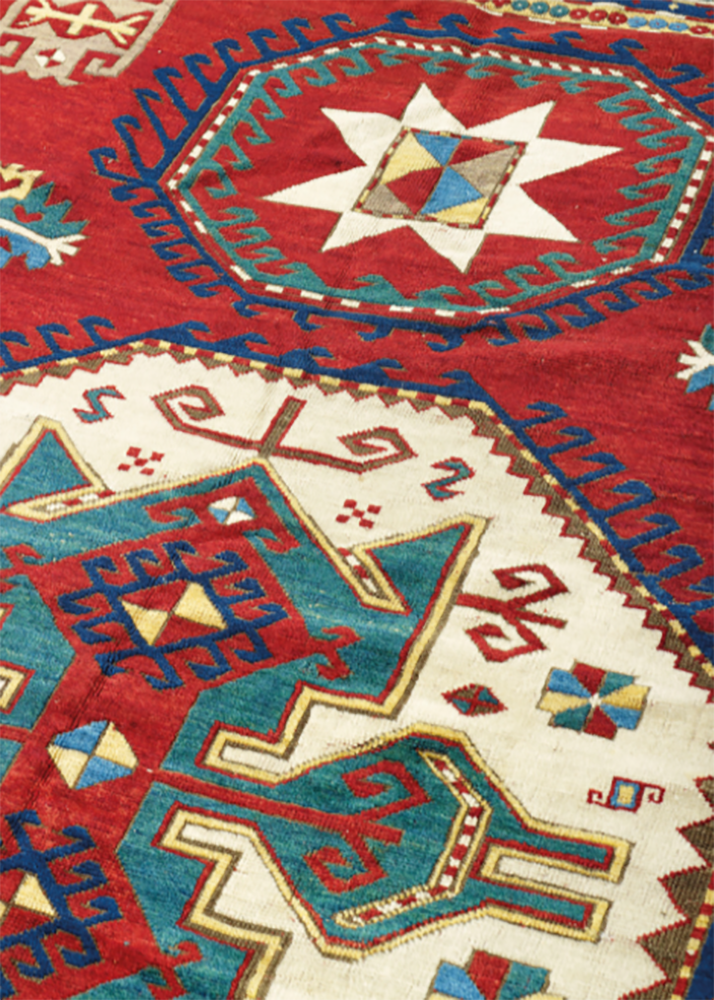

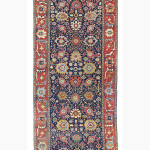
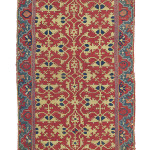







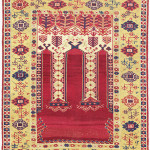

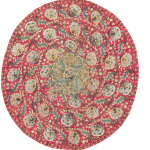
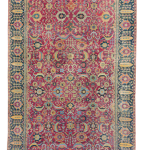


























Comments [0] Sign in to comment